From Android gaming tablets to handheld gaming PC’s, we have seen quite a few products enter the fray since the dawn of the Steam Deck back in 2022. Of course, Lenovo did not just sit idly by as they announced the Legion Go back in September 2023. The Legion Go is Lenovo’s very own handheld PC gaming console powered by the AMD Ryzen Z1 Extreme processor with RDNA Graphics. The console is offered in two storage-based price points, $699.99 for 512GB and $749.99 for 1TB. Having spent three weeks with the Legion Go, we learned that the Legion Go was so much more than just a handheld PC.
Let’s dive into the Lenovo Legion Go and go over what this latest handheld gaming device has to offer.
Lenovo Legion Go Specs
| Processor | AMD Ryzen Z1 Extreme with RDNA Graphics |
| Operating System | Windows 11 Home |
| Memory | 16GB 7500Mhz LPDDR5X (onboard) |
| Storage | Up to 1TB PCIe 4.0 NVMe M.2 2242 |
| Display | 8.8″ QHD (2560 x 1600) IPS, 500 nits, 16:10 aspect ratio, 144Hz refresh rate, 97% DCI-P3, 10-point touchscreen, Gorilla® Glass |
| Audio (Outbound) | 2 x 2W Speakers |
| Audio (Inbound) | Dual-array near-field microphone |
| Battery (Base Module) | 2-cell 49.2WHr |
| Battery (Controller) | 900mah |
| Ports and Slots | 3.5mm Headphone Jack, Two USB-C 4.0 (DisplayPort™ 1.4, Power Delivery 3.0) Ports, MicroSD card reader (supports up to 2TB) |
| Wireless | WiFi 6E* 802.11AX (2 x 2) |
| Bluetooth | Bluetooth® 5.1 |
| Dimensions – w/ Controllers | 40.7mm x 298.83mm x 131mm / 1.60″ x 11.76″ x 5.16″ |
| Dimensions – w/o Controllers | 20.1mm x 210mm x 131mm / .79″ x 8.27″ x 5.16″ |
| Weight – w/ Controllers | 854g / 1.88lbs |
| Weight – w/o Controllers | 640g / 1.41lbs |
Specs taken from product page
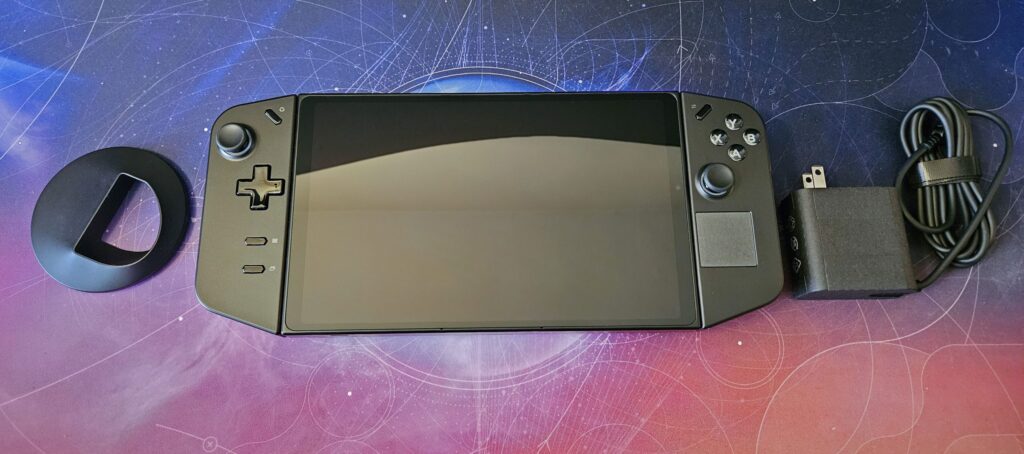
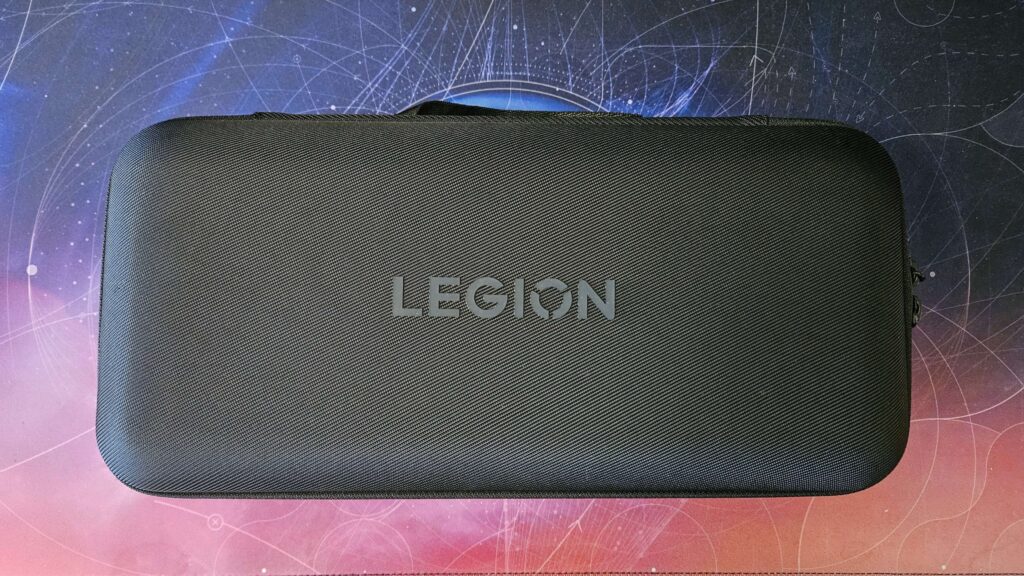
A purchase of the Lenovo Legion Go comes connected to its Legion TrueStrike Controllers. The total package also includes a controller base, a 65W Power Adapter, and a very snazzy carrying case.
Build, Design, and Comfort

At its core, the Legion Go is a Windows PC tablet, with touchscreen functionality. It features a bright and colorful 8.8-inch display, and just the right assortment of ports and connectivity that you would expect from a tablet this size. Powered by the AMD Ryzen Z1 Extreme processor backed by 16GB of onboard memory, this handheld gaming PC is ready to be thrown at your favorite AAA games. However, what makes the Lenovo Legion Go truly unique is its implementation of its removable Legion TrueStrike Controllers.
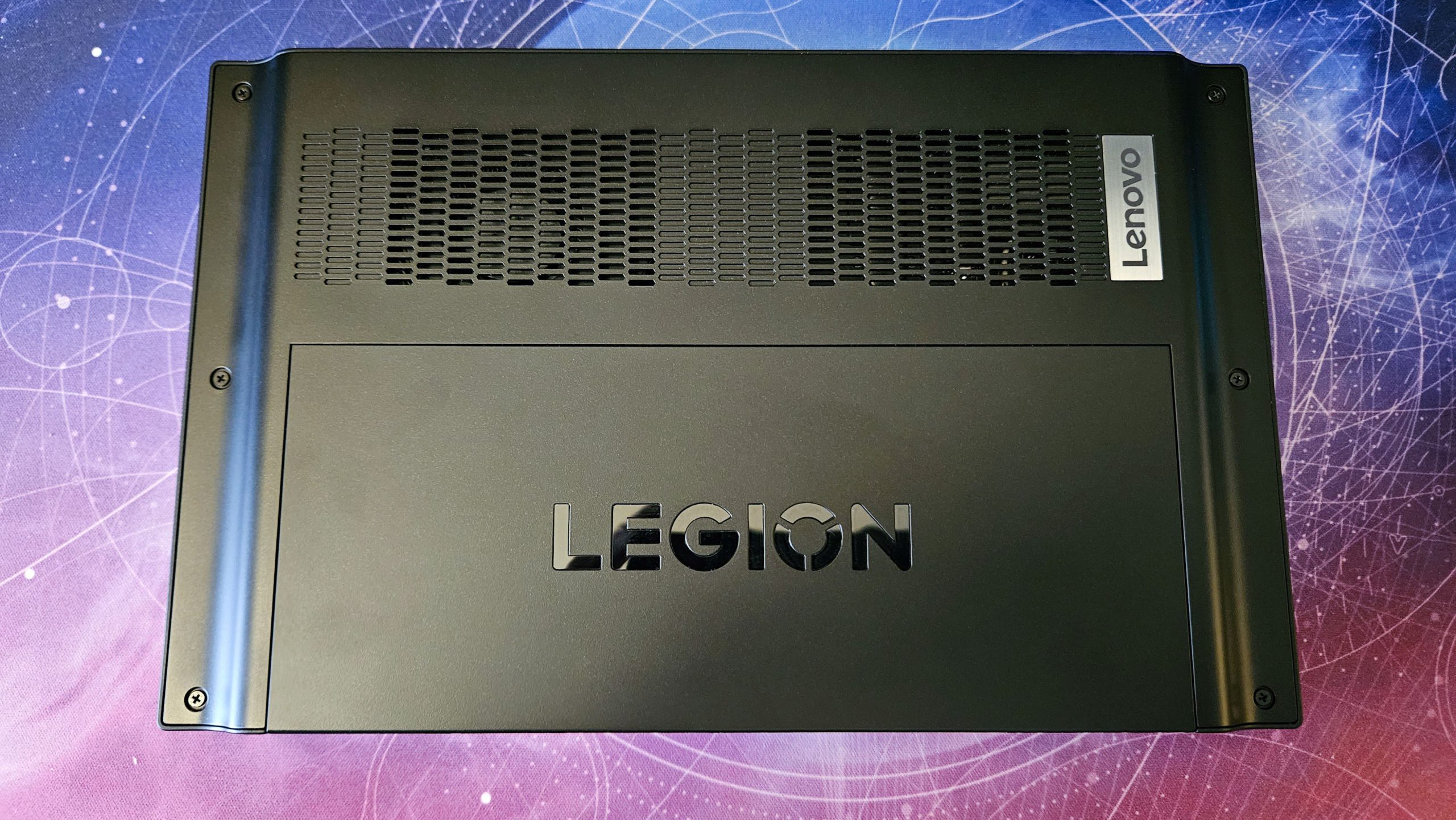
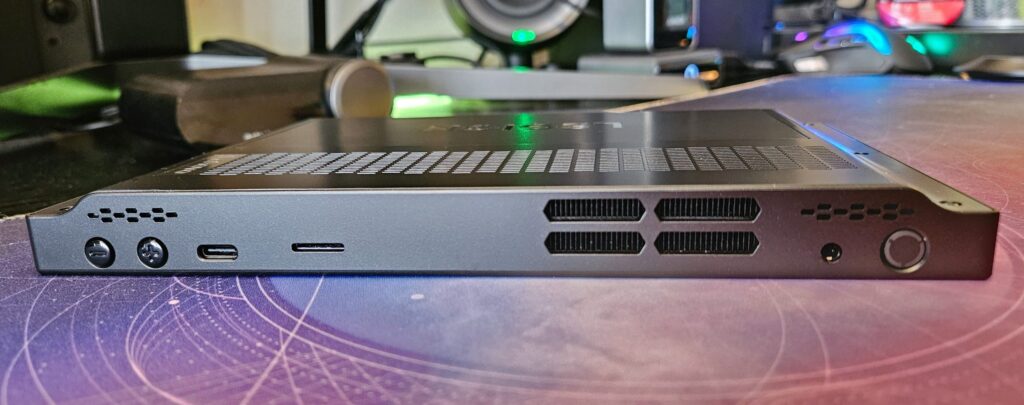
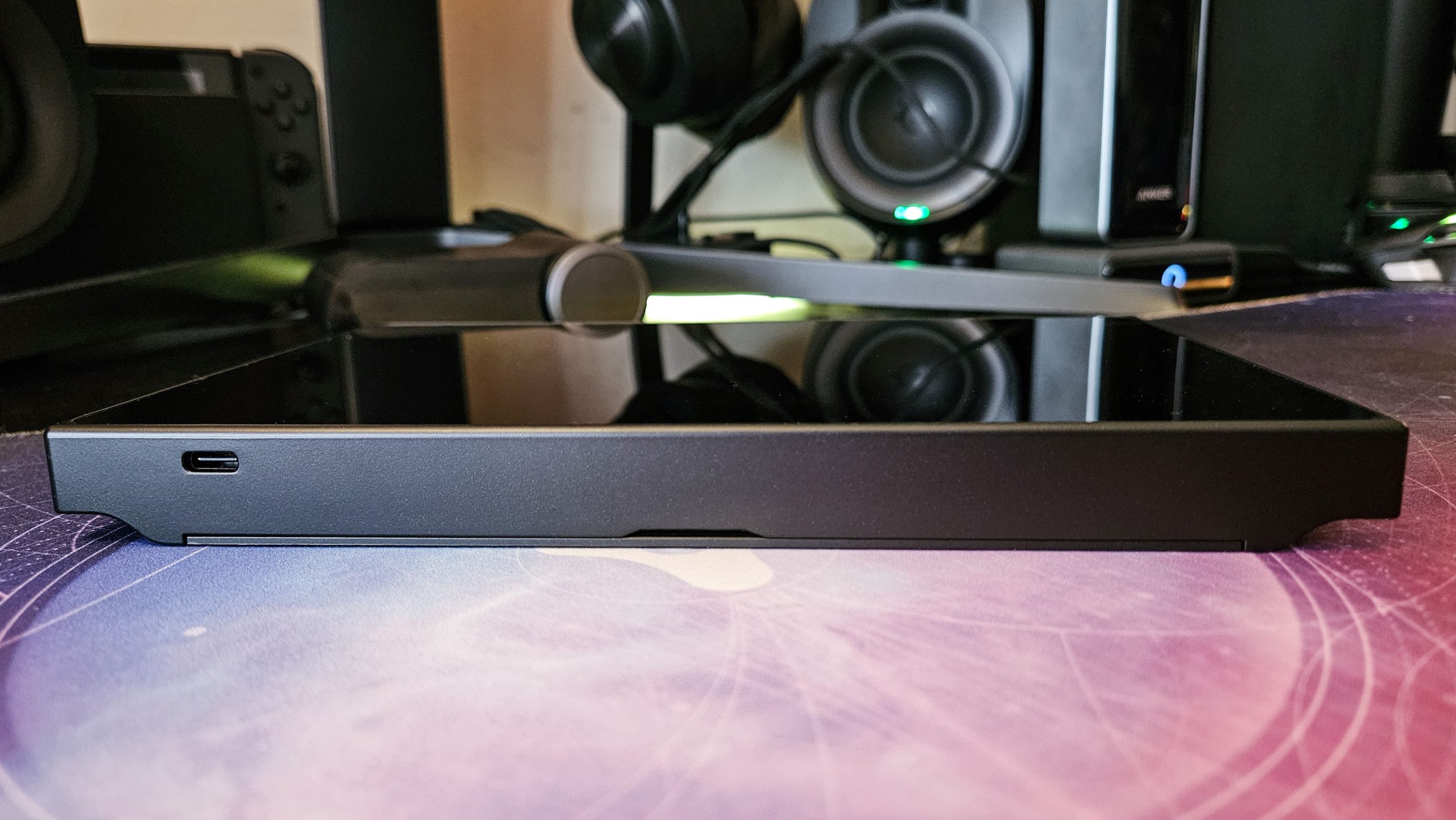
Controls on the Legion TrueStrike Controllers
| Legion L/R | View button (L) |
| ABXY buttons | Menu button (L) |
| D-pad | Trackpad (R) |
| L & R hall effect joysticks | 6x assignable grip buttons |
| L & R bumpers | Mouse wheel (R) |
| L & R analog triggers | Mouse sensor (R) |
| Legion L & R buttons | 2x controllers release buttons |
| Haptics: HD Haptics | Gyro: 6-Axis IMU |
Taken from product page
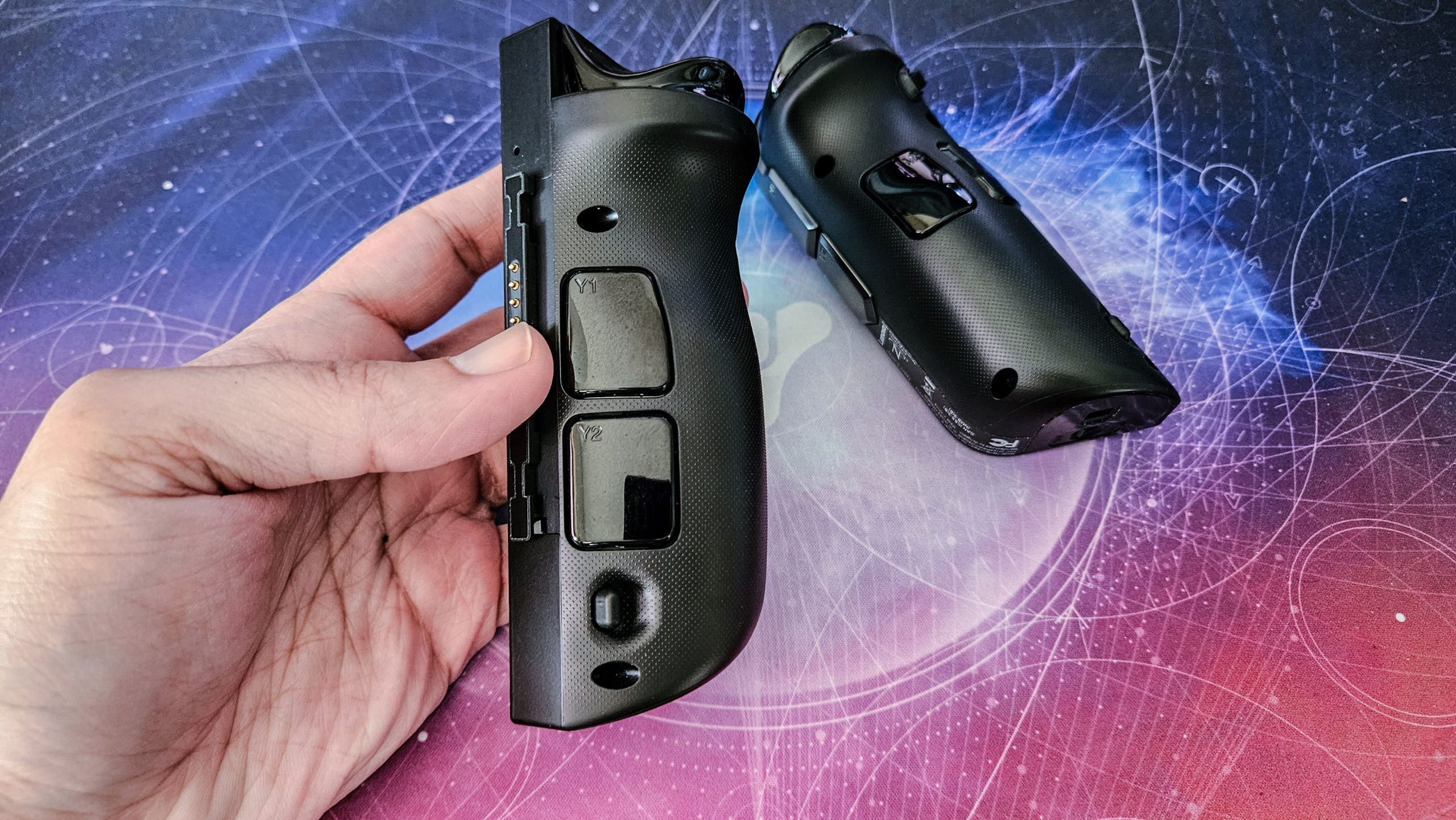



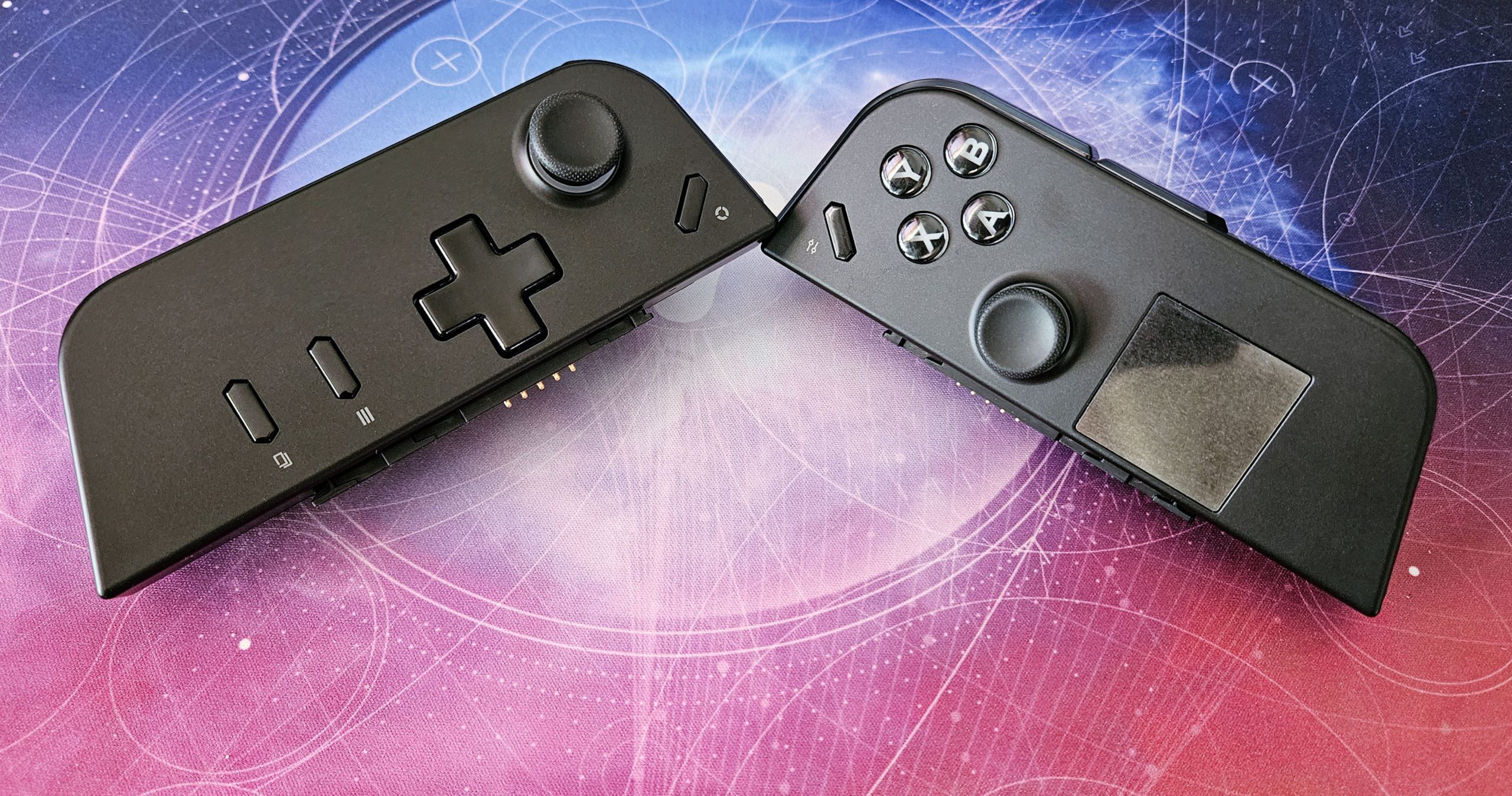
At a glance, the Legion TrueStrike Controllers have all of the standard buttons that you would expect to see in any current-day console gaming controller. If you so choose, you could remove the controller handles, prop up the Legion Go base using its attached stand, and play in a more freeing setup. While in “Controller Mode”, connected or detached, you can use the trackpad on the right TrueStrike Controller, should you need to use a mouse as you browse around the Windows OS.

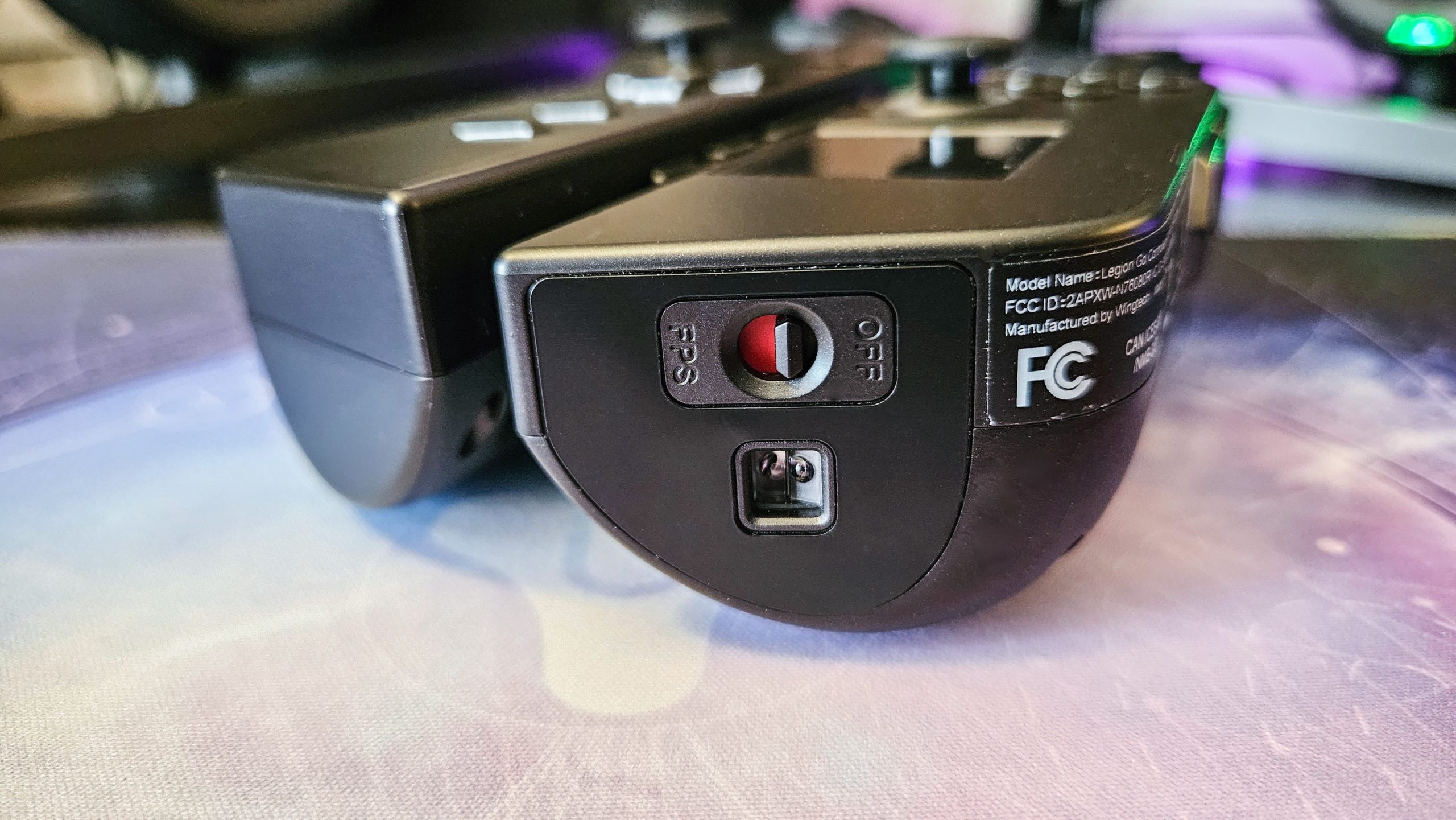

However, the Legion TrueStrike Controllers also offer a keyboard and mouse style control scheme as well. You simply flip the switch on the bottom of the right controller to FPS, then dock that controller into the included controller base.
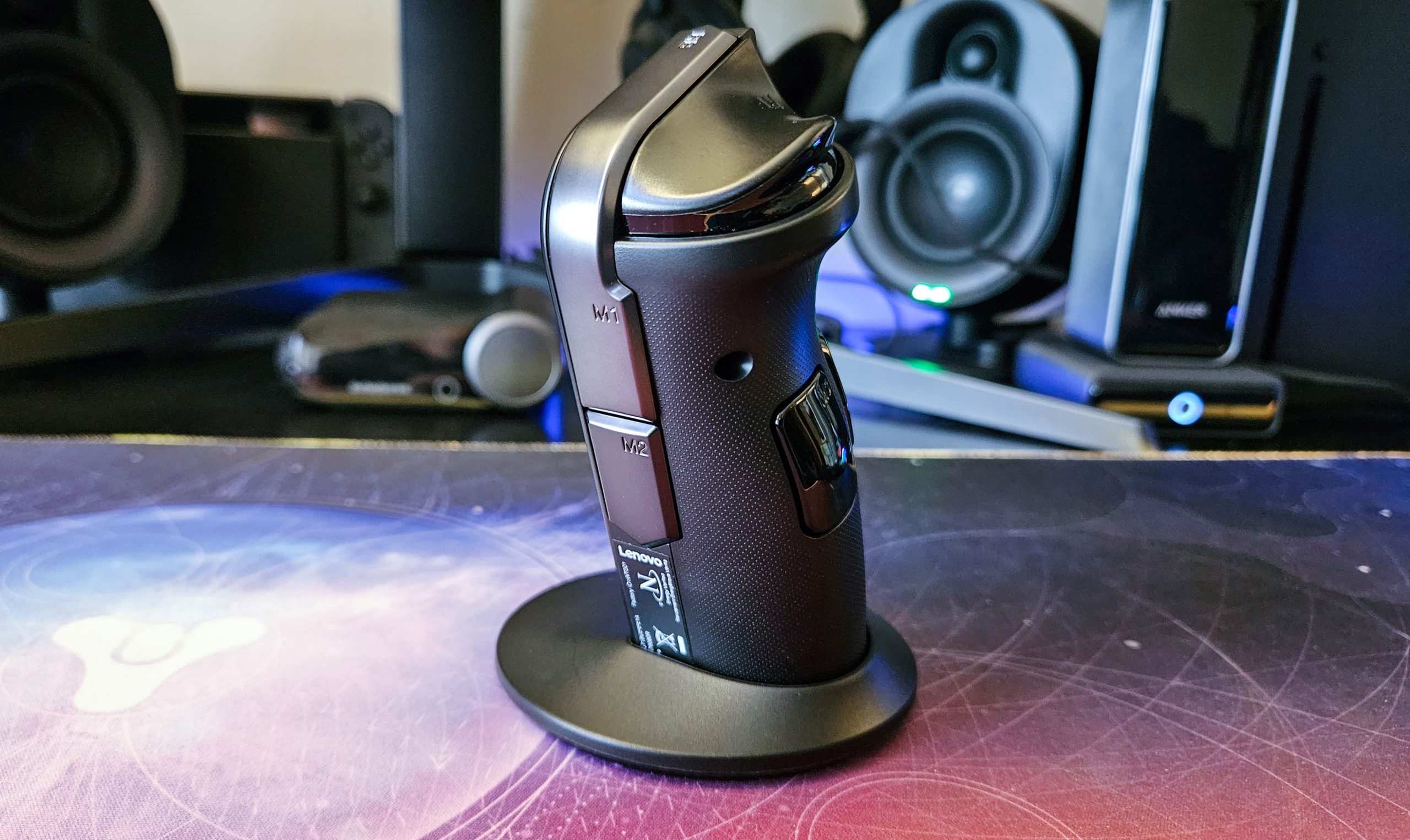
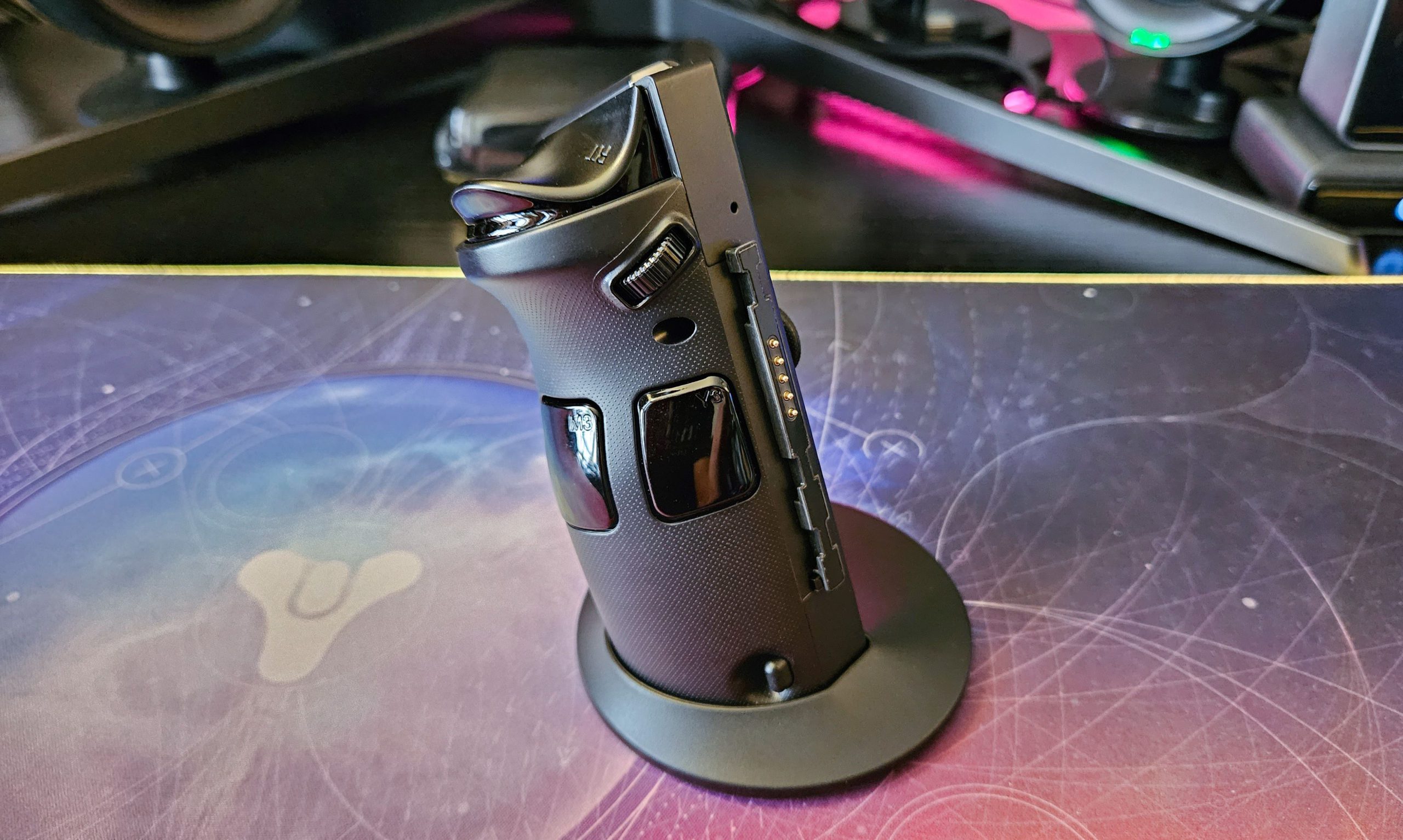
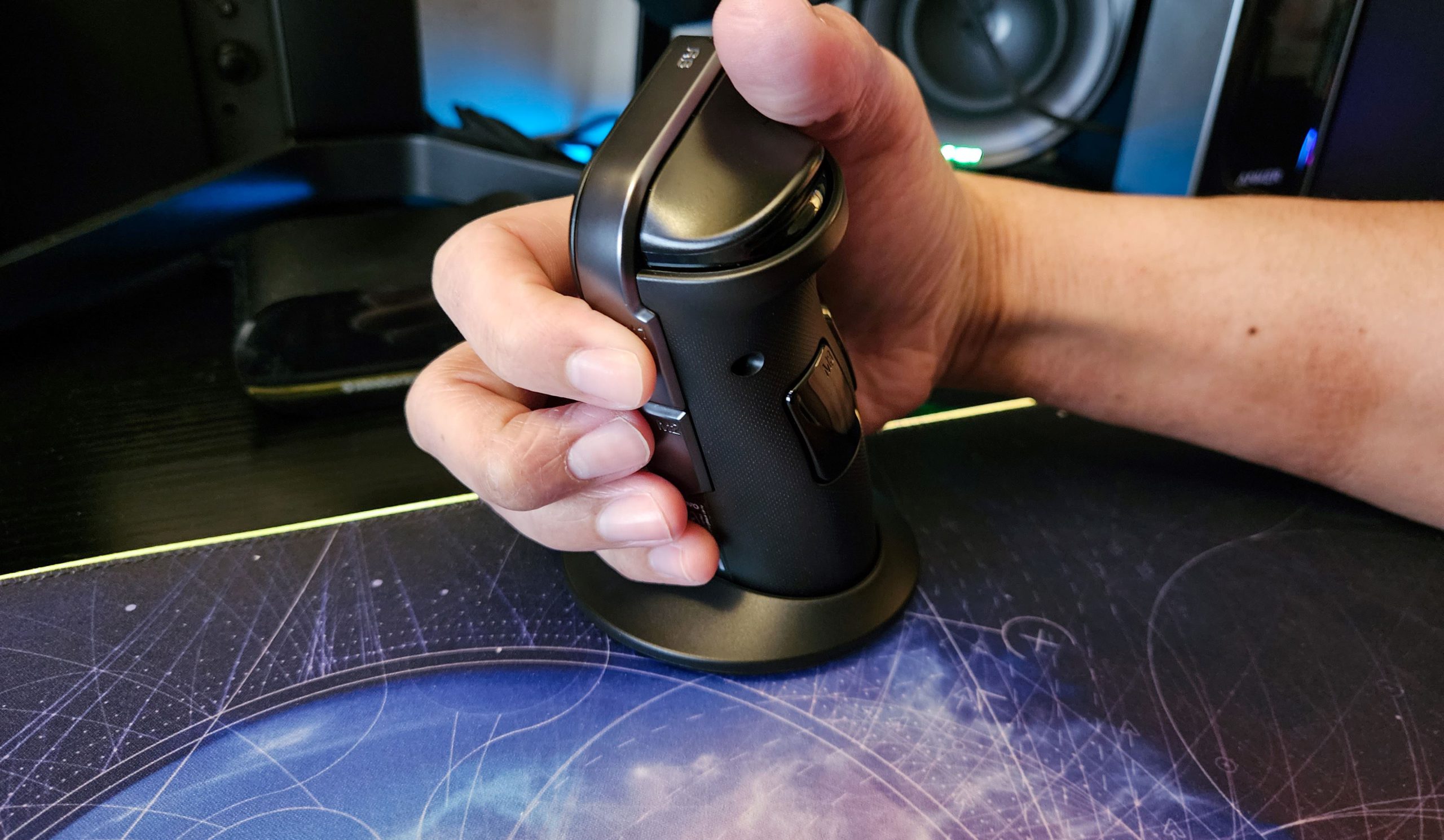

Just like that, you now have a working vertical mouse, ready for use in your favorite first-person shooters. The left controller is used for movement while the right acts as your mouse, just as in a keyboard and mouse setup. The right controller even has all of the buttons and controls that you would expect from any mouse, including a scroll wheel.
From right out of the box, the Lenovo Legion Go is an impressive device, from what it gives you and what it tries to do. At its base, you have an affordable and highly portable gaming PC. The two USB-C 4.0 ports give you flexibility in your use cases, where you can use a USB-C to Display Port cable to connect the console to an external display. Then consider how the Legion Go’s retractable stand and the Legion TrueStrike Controllers offer you gameplay freedom in both Controller and FPS Modes. At any point, you can toggle between handheld and desktop play in seconds.

The 8.8-inch display of the Lenovo Legion Go, is large, colorful, and impressive. Thanks to its 144Hz refresh rate, the screen is ready to visually keep up with any game that the Legion Go console can handle. The display gives you 97% DCI-P3 color accuracy while its max 500 nits of brightness gives you visibility in even the brightest of lighting scenarios. Whether you are playing in handheld or controller-detached fashions, this is a beautiful display that you can stay immersed in without wanting to connect to external displays.
I did think it was an interesting choice to not simply have both USB-C ports on the top of the Legion Go. When you have the Legion Go resting on a table-top surface, you pretty much render that bottom USB-C port unusable because of its placement. So, if you intend to use more than one USB-C port, you would either need to lay the Legion Go on its back or use a USB-C dock to give you more port access. Of course, this is only an issue if you want to connect multiple additional peripherals in a more stationary setup.
When it comes to comfort, the Legion Go felt pretty natural to handle. Whether you are using the TrueStrike Controllers in connected, detached, or “FPS” fashions, all of the controls and buttons are easy to access. The buttons, D-pad, and triggers feel snappy and responsive, making them enjoyable to press. The textured grips on the TrueStrike Controller make the Legion Go easy to grasp in handheld mode, which was welcomed in those longer gaming sessions. Handheld or “Controller Mode” felt quite natural from the start, where there was little to no learning curve whatsoever.
The TrueStrike Controllers’ FPS mode took a little getting used to for me. This was especially the case when it came to remapping movement controls on the left controller. I have never been a user of vertical mice. However, vertical mice are naturally more ergonomic, so I got used to it fairly quickly. This allowed me to focus on handling movement while I worked through the learning curve of this playstyle. Once I did get used to it, I was able to keep up with other keyboard and mouse users in my favorite first-person shooters.
Last but not least, the Lenovo Legion Go’s carrying case protects the console with some pretty significant padding. The case is designed to hold the console, the connected TrueStrike Controllers, and the controller base for FPS mode. The bottom of the case houses a convenient covered slot which allows access to the Legion Go’s bottom USB-C port. This allows you to charge the console even when it is safely tucked into its case.
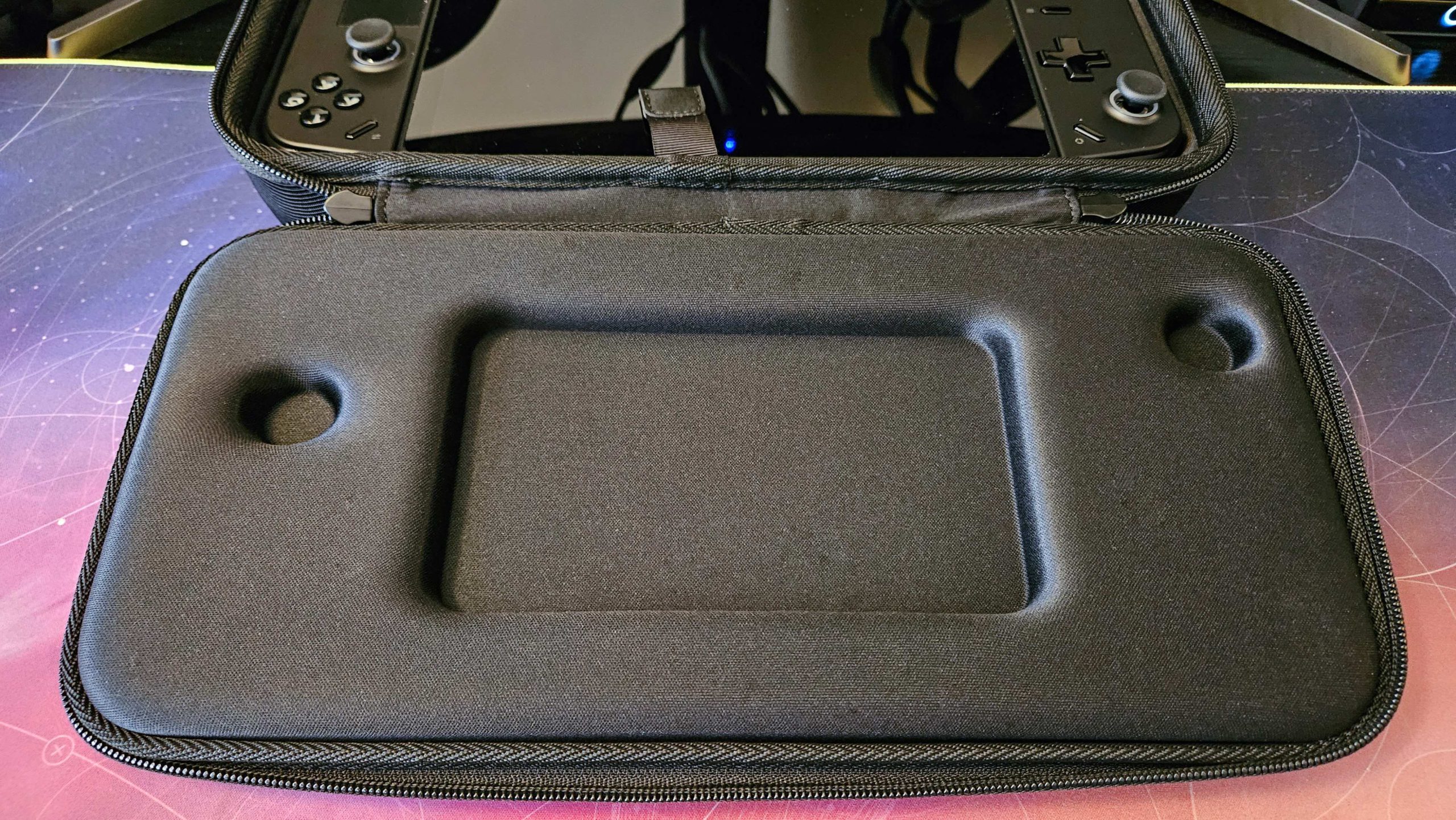
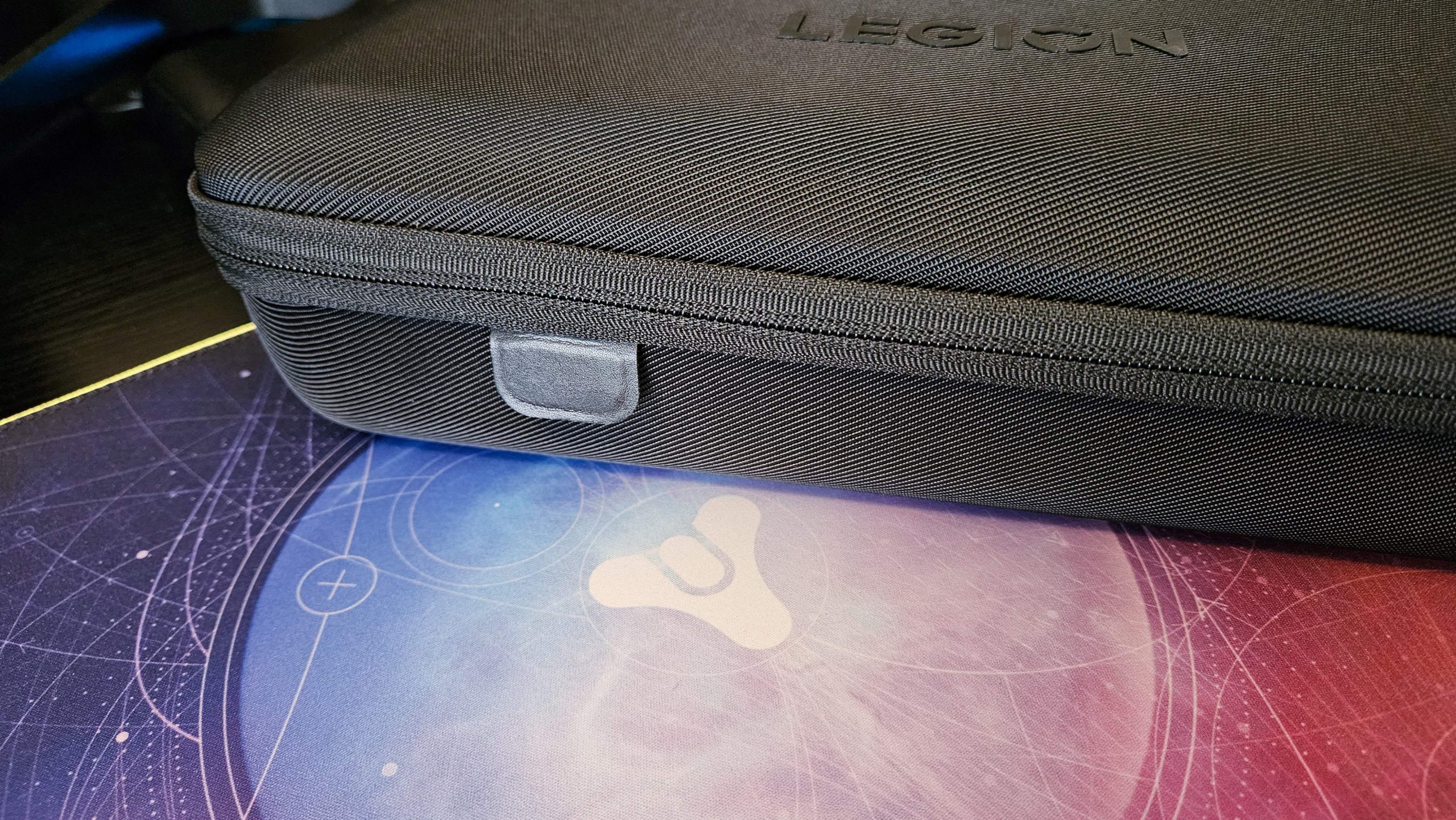
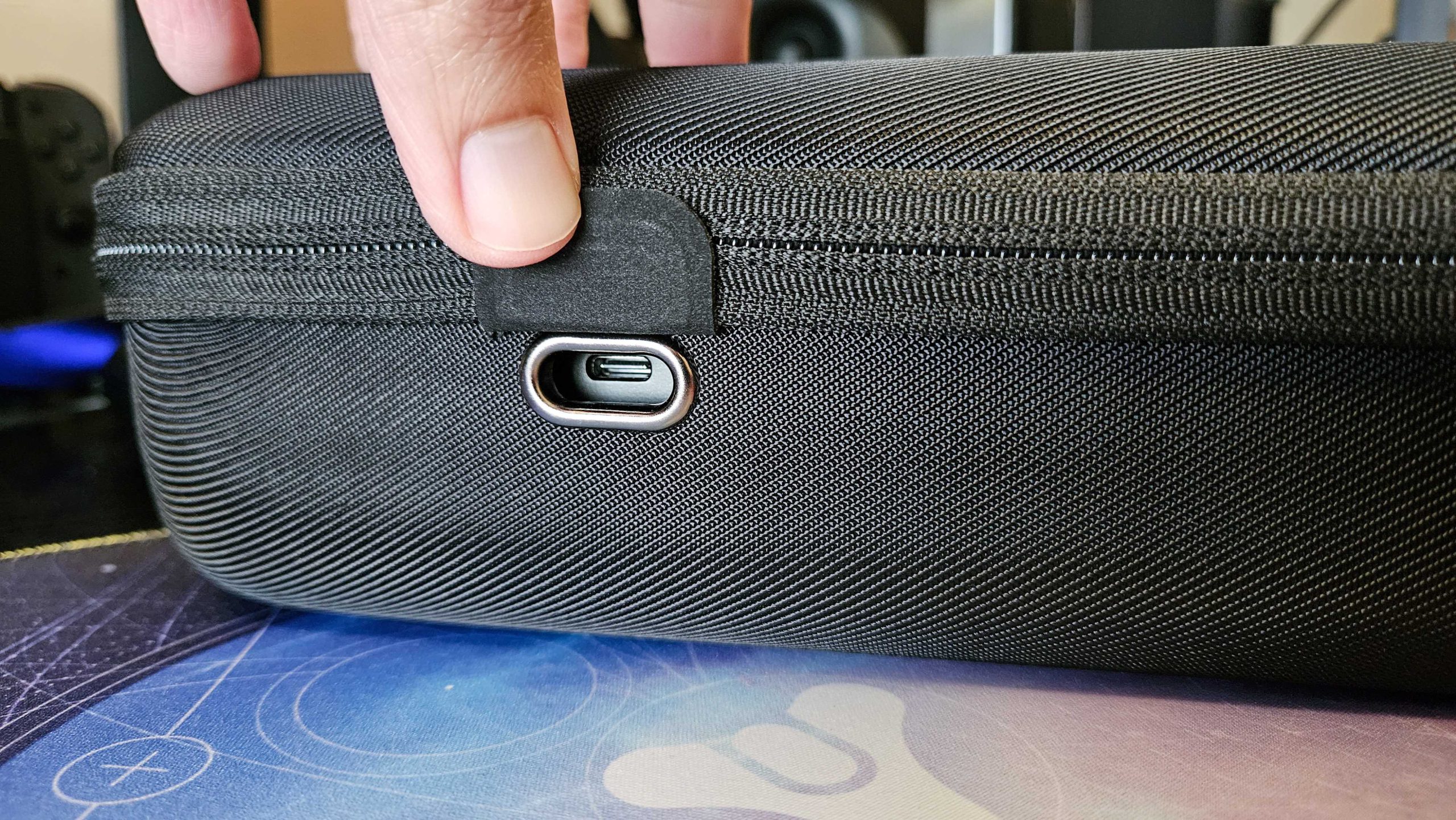
From a build and design perspective, I really like the Legion Go’s approach here. You have a highly portable handheld gaming PC that thrives to get you as close to that PC gaming experience as possible. All of the controls are customizable and remappable, where you can even change the colors of the LED rings around the analog sticks. Its impressive display, modular design and its foldaway stand allow for a flexible and enjoyable gaming experience from its base design alone.
Features and Performance

Legion Space, the Legion Go’s proprietary interface, drives the experience within Lenovo’s handheld gaming console. Pressing the Legion button on the left TrueStrike Controller brings up the full Legion Space console. Through this console, you can manage and launch all of your installed games from one location. You can also access system settings, button remappings, and manage various usage profiles.
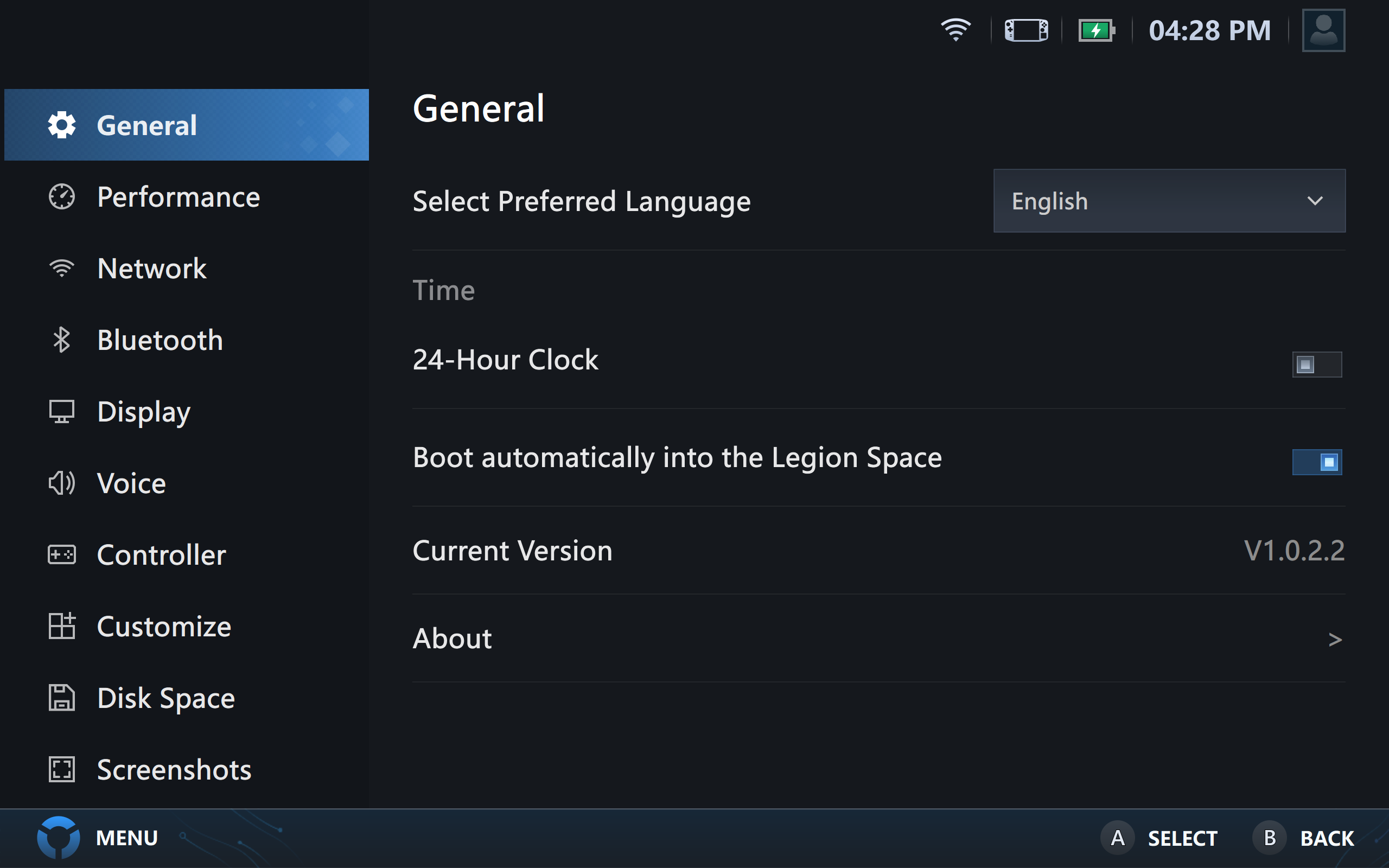
Pressing the Legion button on the right TrueStrike Controller brings up a fast Legion Space Quick Settings menu, where you can quickly toggle between many handy options. This menu is especially useful in that its interface displays over currently-running apps. This allows you to make quick system setting changes without taking you completely out of your game. Outside of already useful settings like resolution, refresh rates, and performance modes, here is where you can hop quickly between your lighting and button-mapping profiles.
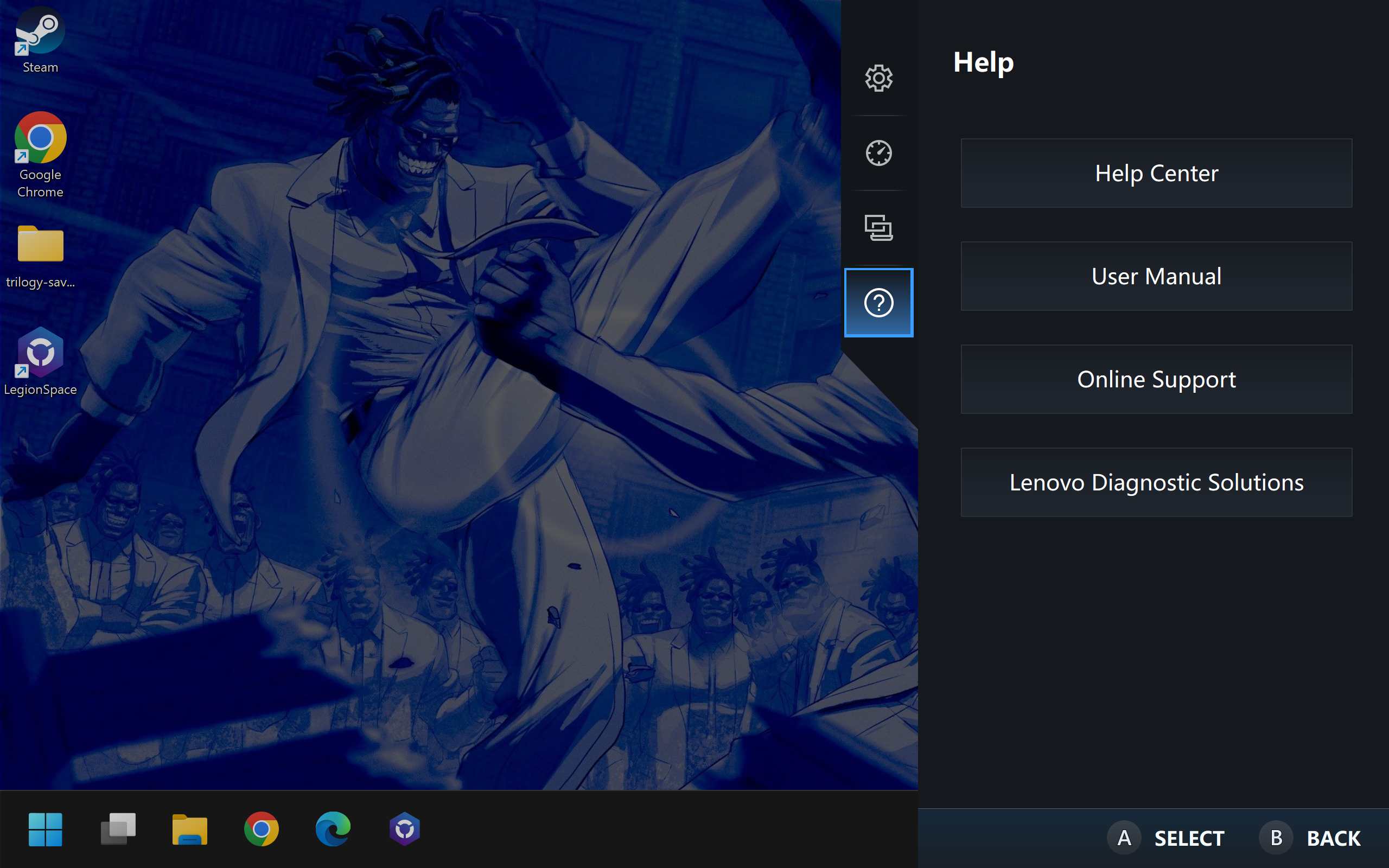


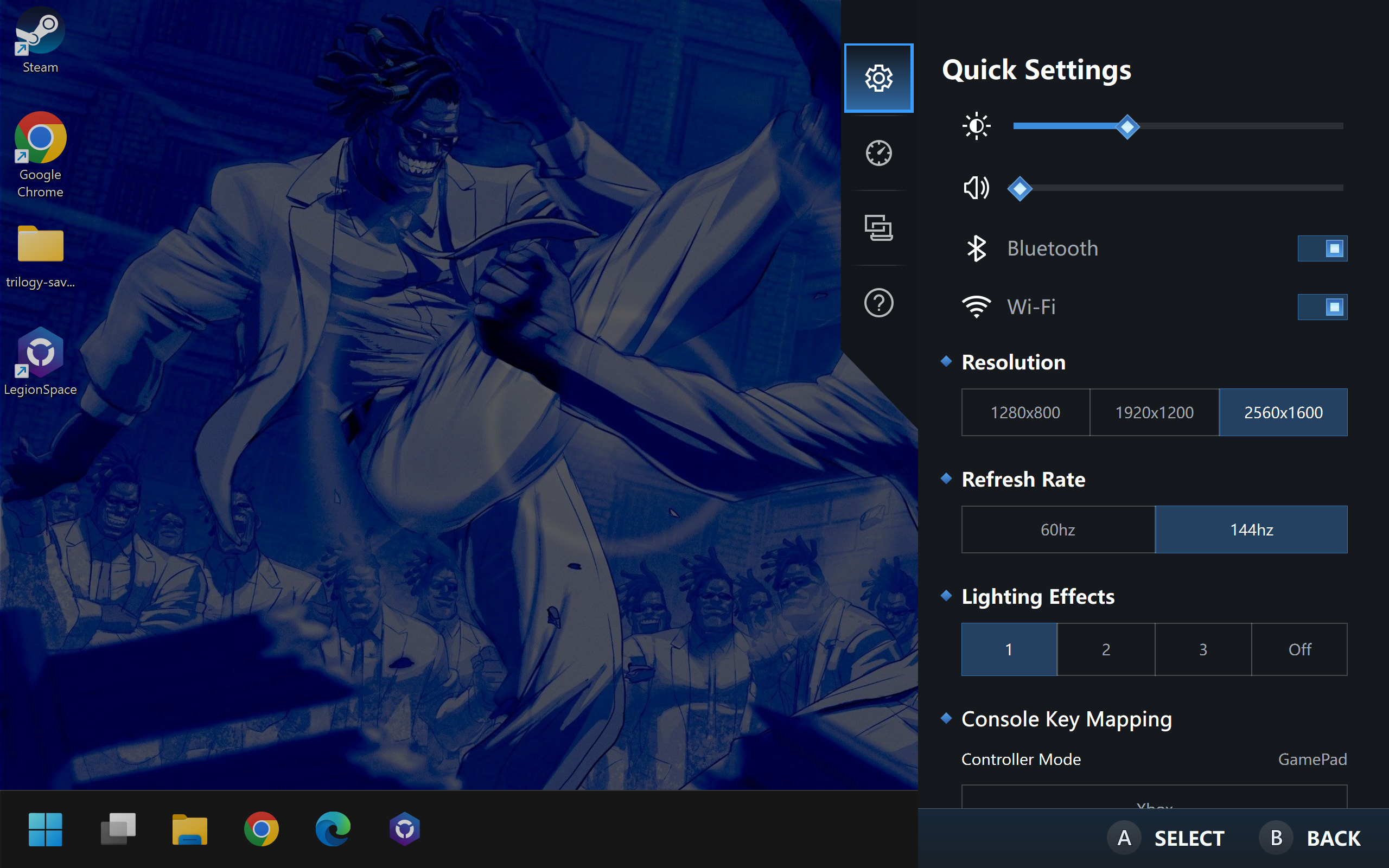
Quick Settings also lets you check detailed system performance metrics on the fly, without having to leave your game. You even have several options for system monitor overlays, where you can either go simple with a basic FPS monitor or go all out with a display like this.

I was very impressed by the level of customization and control that the Legion Space interface gives you over the Lenovo Legion Go console. In Controller Mode, you have access to the rear controller buttons, where you can either remap them or leave them at their default deactivated setting.

Players that traditionally use rear paddles on their controllers to crouch spam can continue to have that functionality here. In FPS Mode, you can map any button to any keyboard or mouse action that you would use in a keyboard and mouse setup. Whatever your favorite key choices may be in your PC gaming setup, the Legion Go is ready to emulate it thanks to the Legion Space software.

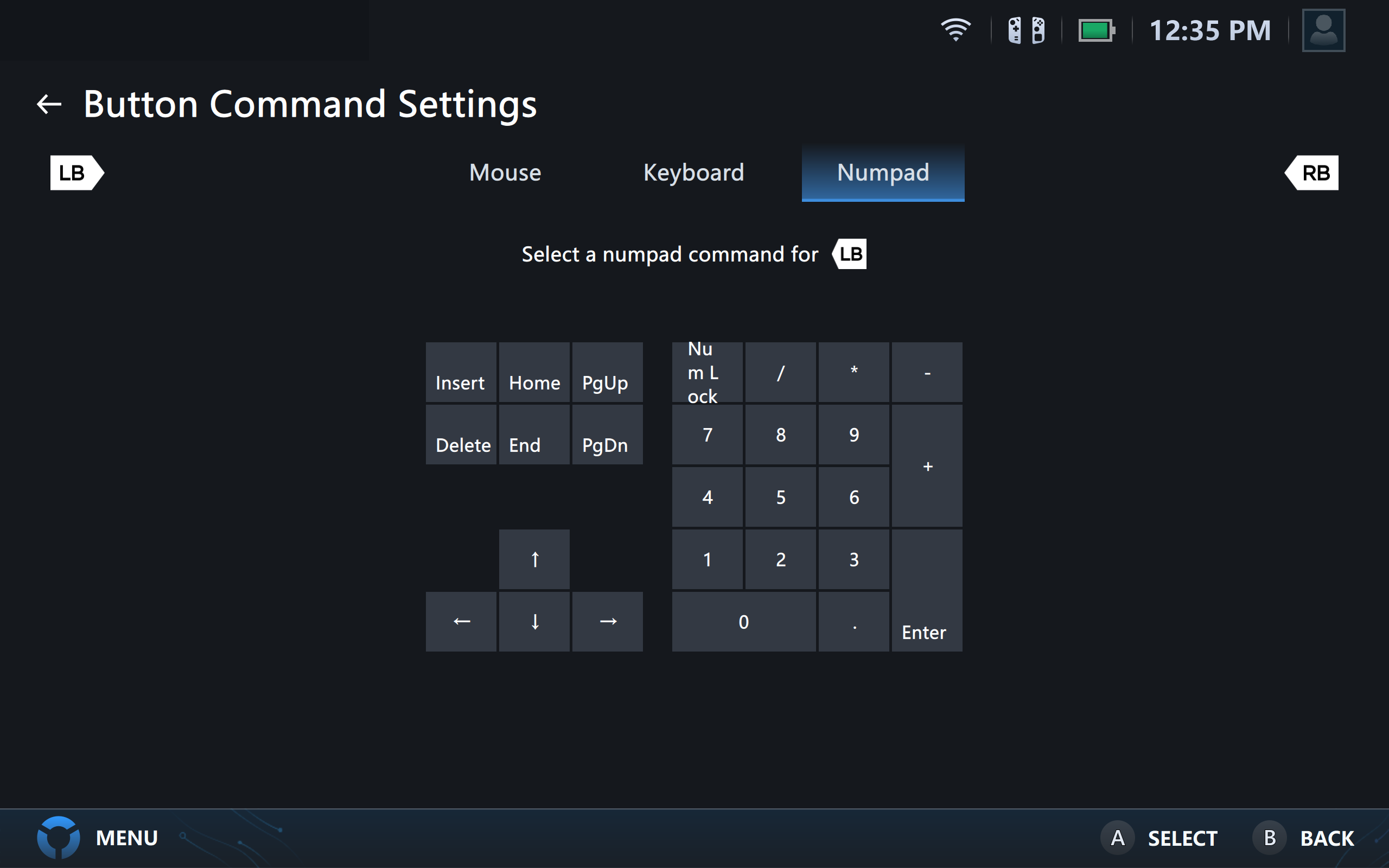
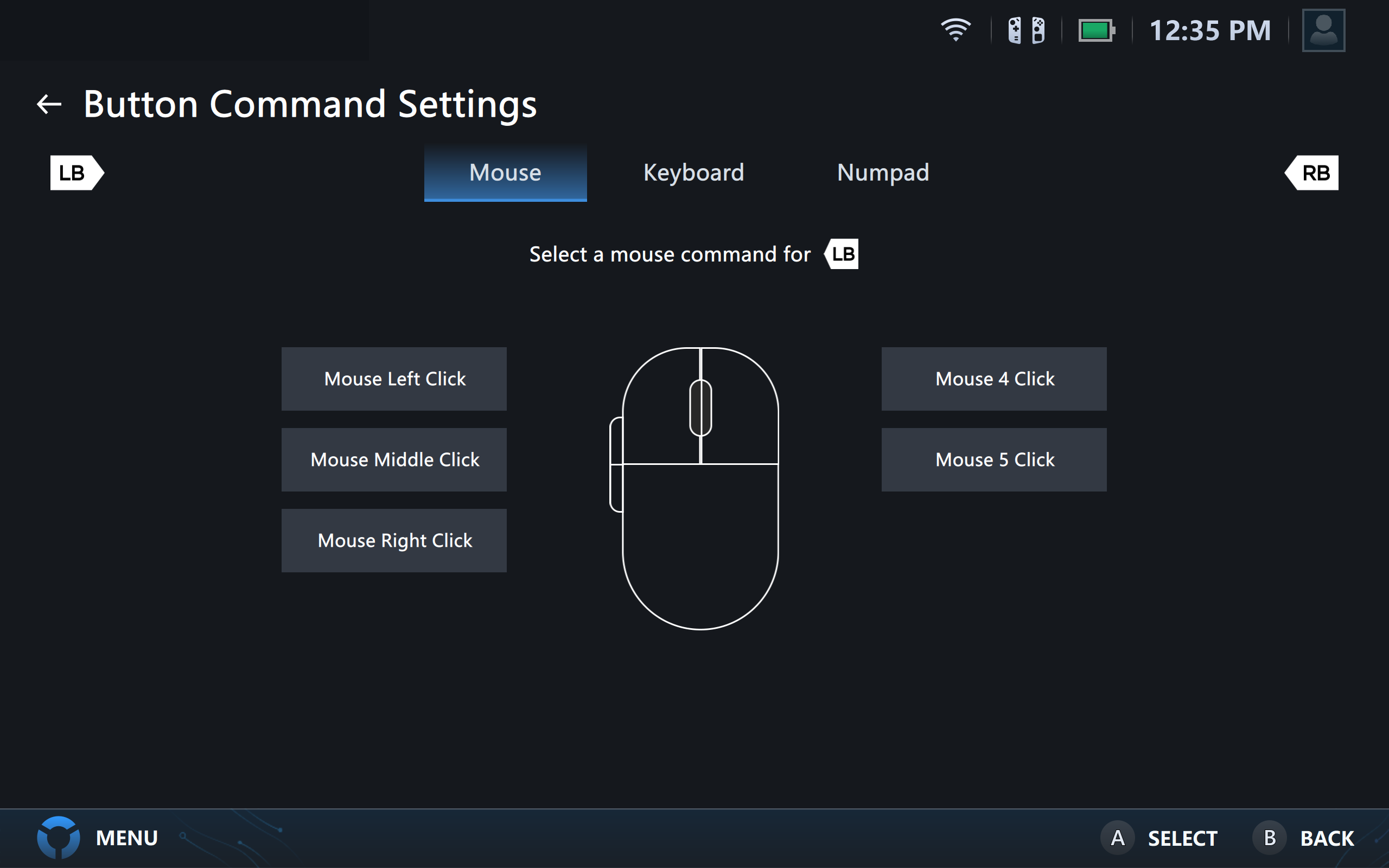
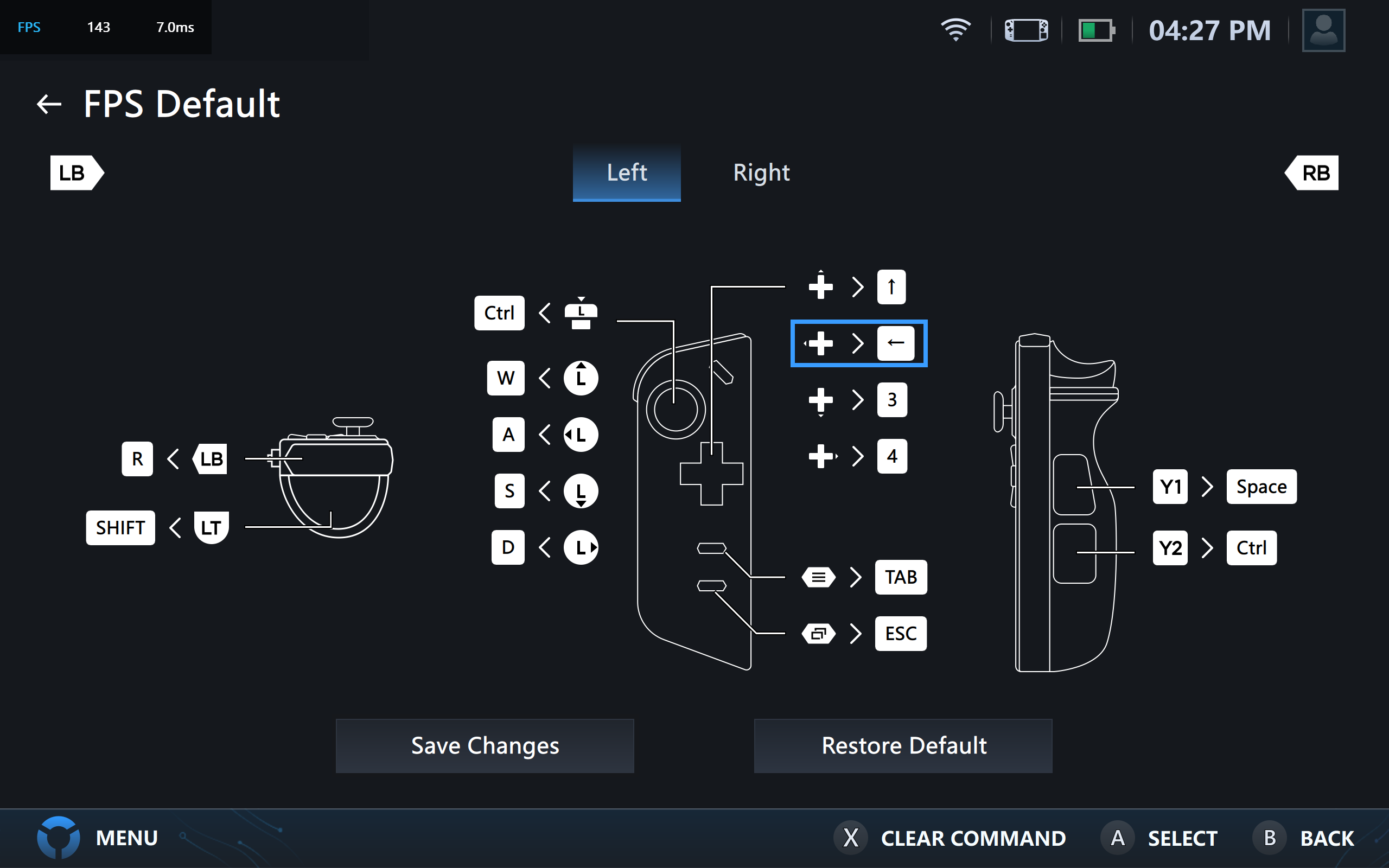
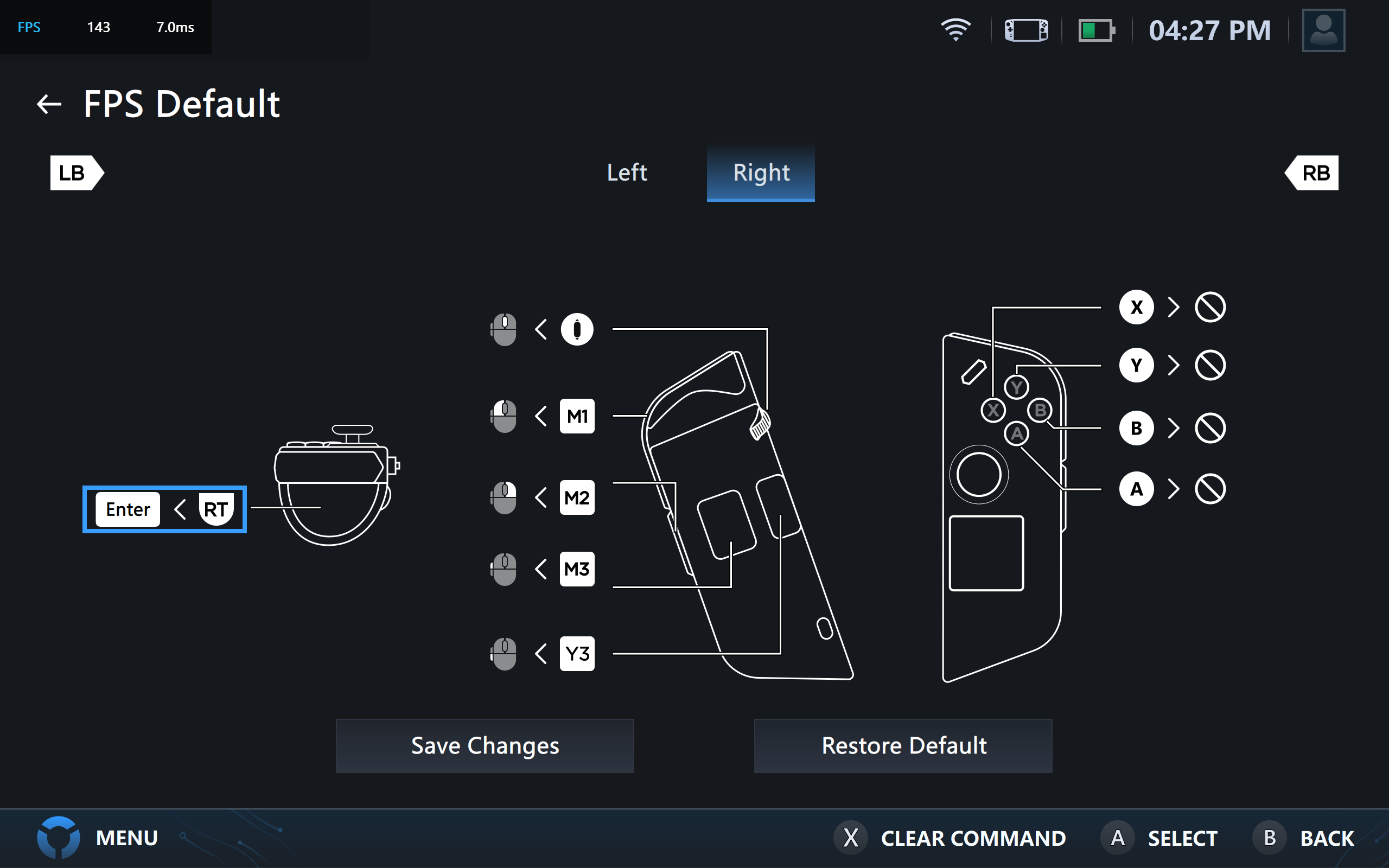
When it came to performance, the Legion Go did a good job a maintaining respectable, if not very-playable, frame rates. In most of the games I tried, keeping the graphic settings at middle to low levels proved to be the best balance between graphic fidelity and frames per second. As such, the Legion Go was at least able to make every game I normally play run at a frame rate that I could continue to excel at.
Starting with the best results, Apex Legends was able to run at an impressive high 60 to low 70 frames per second. The high frame rates allowed me to enjoy Apex Legends in both Controller and FPS Modes, with the latter shining particularly well since I was technically in the PC lobby. Controls felt responsive and movement felt smooth.
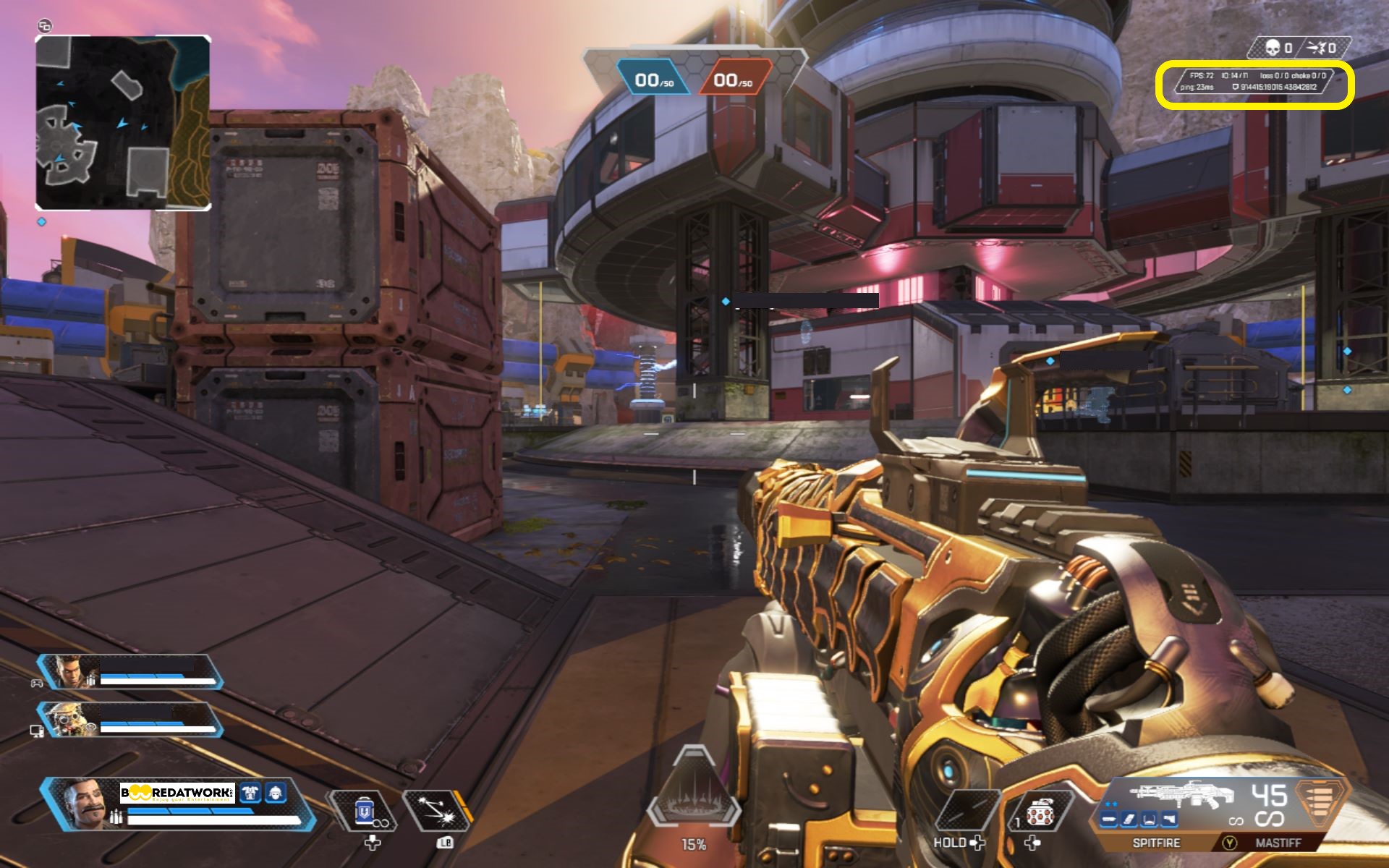
Next up was Street Fighter 6, where the Legion Go continued to perform with solid results. Holding steady in the neighborhood of 60 FPS, the Legion Go allowed me to fight other players to my hearts content. The game ran smoothly and responsiveness was never an issue during my online casual matches.

Street Fighter 6 is a game I normally play with a 6-button fightpad, so I played some of my first matches using the Modern control scheme. Here, the D-Pad felt pretty comfortable to use as it allowed for crisp movement. I then connected my Victrix Pro BFG controller and got back to what I am used to, switching back to a Classic control scheme. Overall, the Legion Go shined brightly as a viable solution for playing Street Fighter 6 on the go.
Lastly, we have Destiny 2, where the Legion Go mostly kept the game running in the low 40 FPS range.
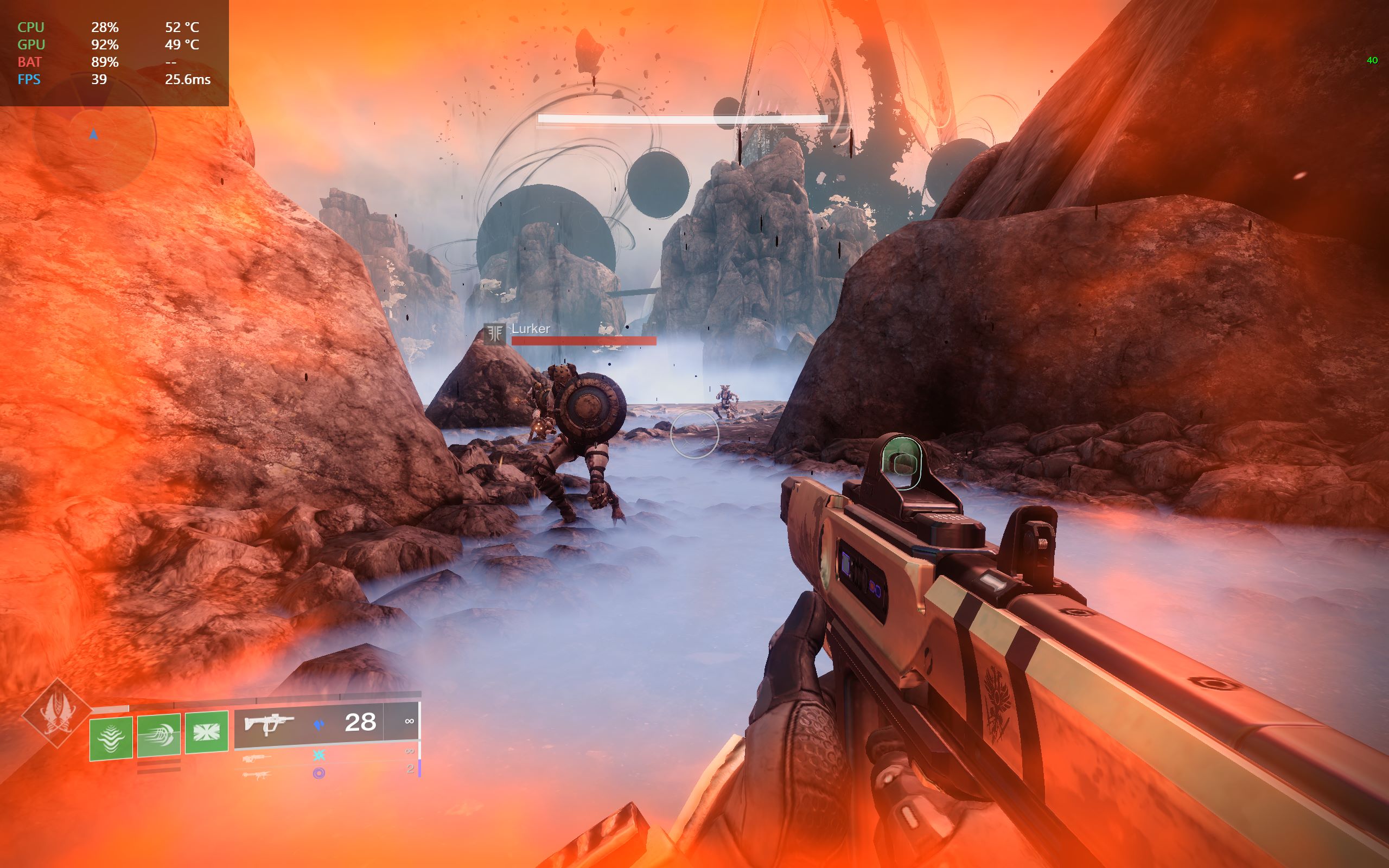
Here, the game was also quite playable in both Controller and FPS Modes. I found myself using FPS Mode mostly during PVE content and Controller Mode specifically for PVP. Even running at 40 FPS, I was still able to enjoy close to the same amount of PVP success that I was used to with a controller.
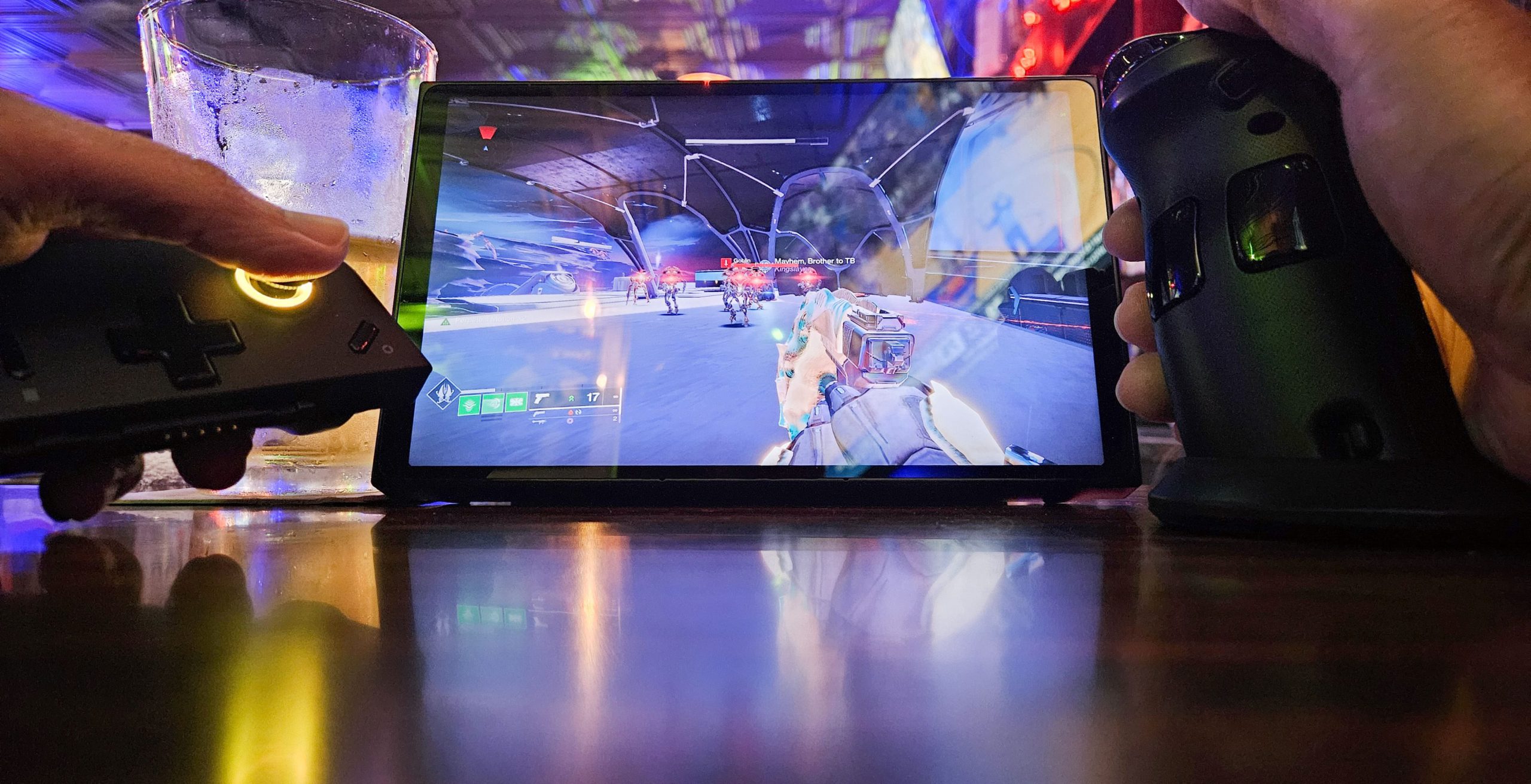
At first, to get a little accustomed to the now lower frame rates, I connected the Legion Go to my Samsung Odyssey G7 monitor and connected a wired Xbox controller.

After getting comfortable after a match or two, I decided to push the envelope and play Trials of Osiris off of a local bar’s wifi. As crazy as it sounds, I was able to go flawless with the Legion Go in handheld mode. Whether that is a testament to the console’s power, handling comfort, or both, the point is that the Legion Go allowed me to enjoy some high-level PVP matches on the go. In that right, that is a win in the performance department.
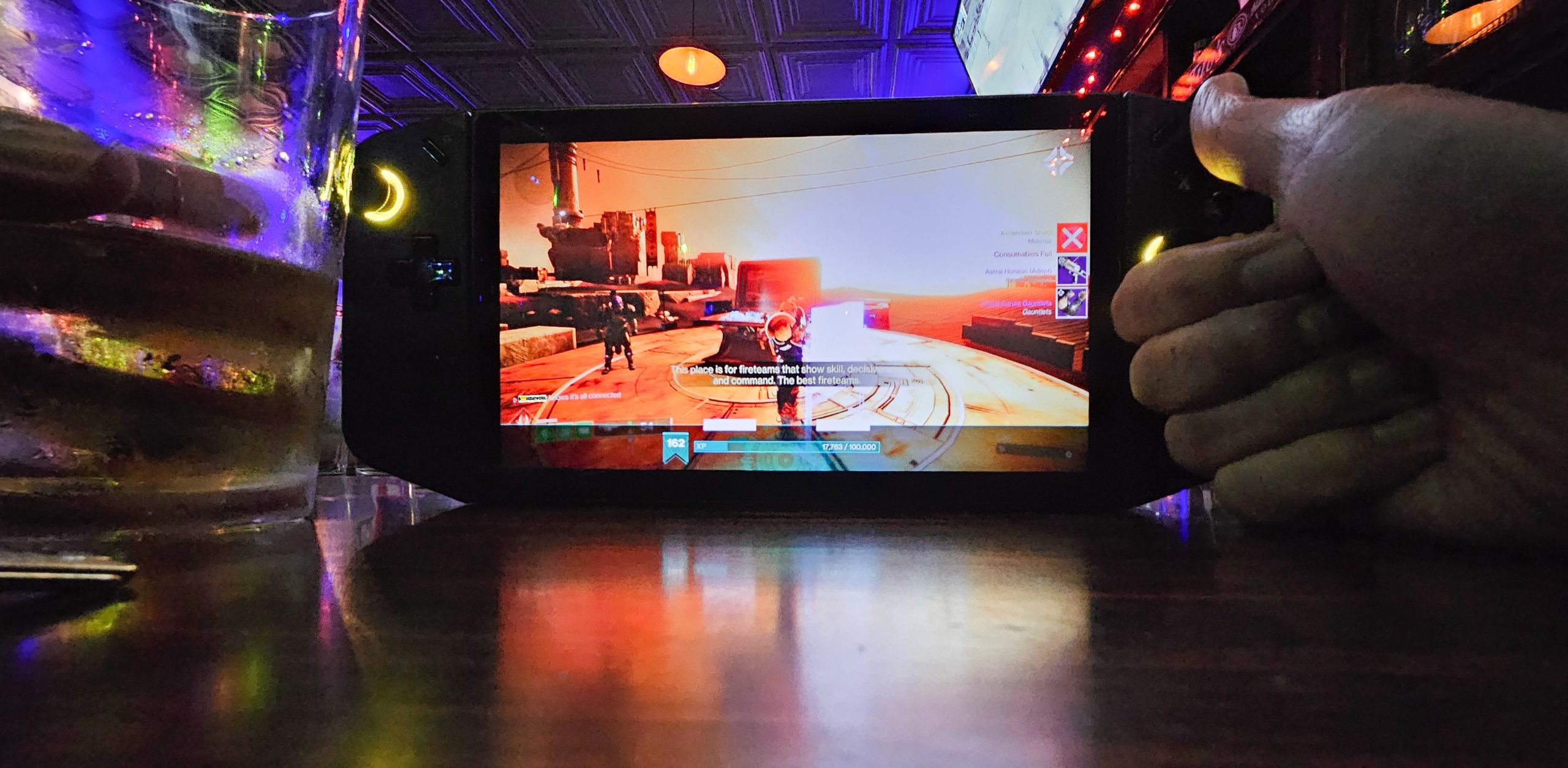
The battery on the Legion Go performed somewhat on-par with what I have seen from gaming laptops. It sports some decent charge rates, where a 10-minute charge gives you up to 30% of battery life, with 30 minutes giving you 70% and 80 mins bringing the battery back to 100%.
For all of the gaming scenarios above, I ran the Legion Go in Performance Mode, with the fan blowing at its maximum rate. As such, I was able to get up to about an hour and a half to two hours of game play from the unit. Destiny 2 seemed to burn through the battery the fastest, where I got just a little over an hour of gameplay before I had to plug the unit to a power source. I luckily still had the Anker Prime 27,650mAh Power Bank I reviewed here, so I was always able to give myself about an hour and change of more gameplay when I was outdoors.
Nevertheless, the Legion Go was able to give me generally two hours of gameplay whenever I did not run the unit in Performance Mode. Of course, this was at the expense of frame rates. However, considering the kind of battery drainage I am used to seeing in gaming laptops, the Legion Go’s battery pretty much performed as I expected it would.
Final Thoughts
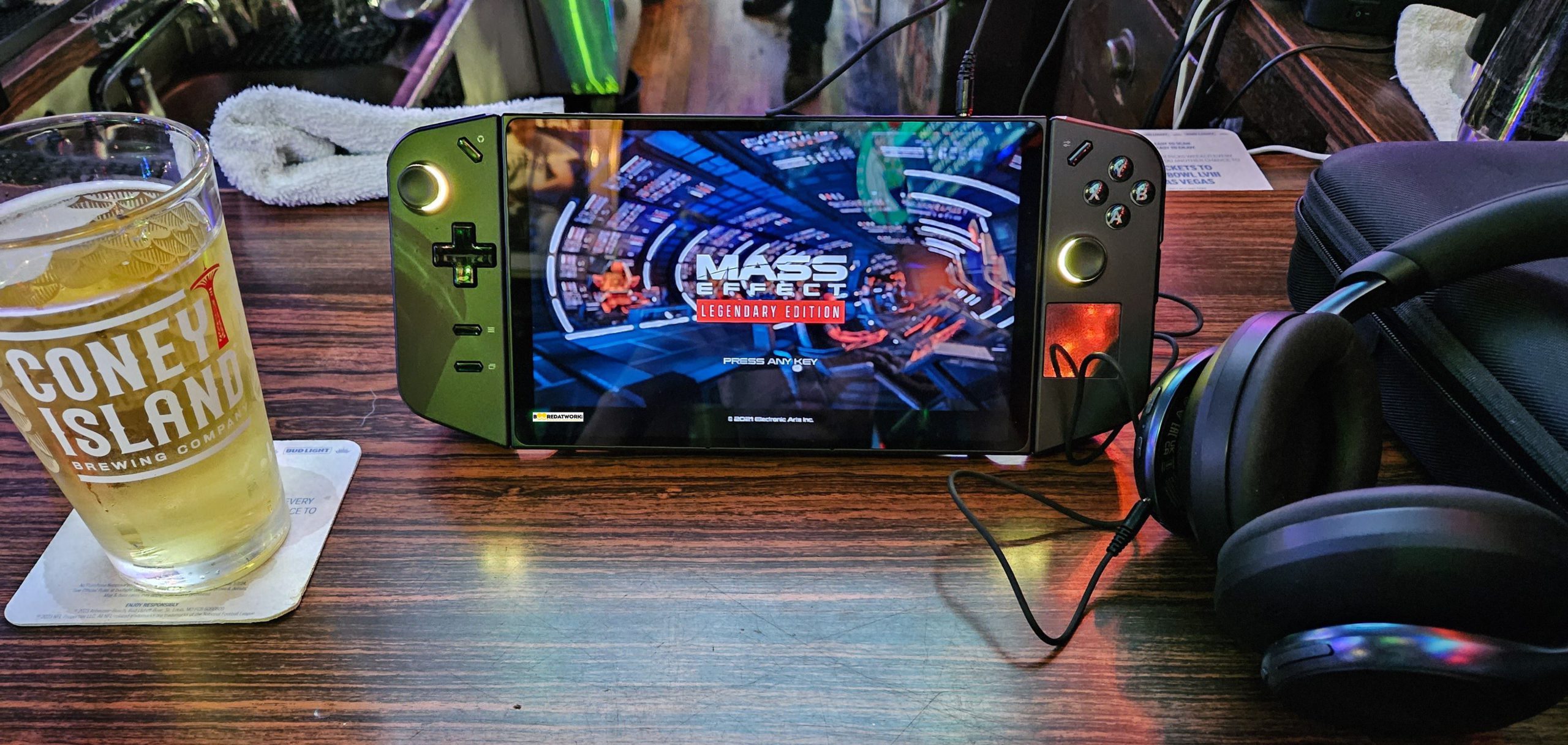
I am impressed by what the Lenovo Legion Go brings to the table. On the go, you can get up to around two hours of AAA-quality gaming at some respectable and highly-playable frame rates. With just a pinch of surface space, you can play some of your favorite PC shooters with a keyboard-and-mouse-like setup at the flip of a switch. You also get a very large and vibrant screen that allows you to enjoy your content to the best of the Legion Go’s ability.
Whether you are a seasoned PC gamer or simply curious about PC gaming, but are too afraid to go full “keyboard-and-mouse”, the Legion Go is a solid solution for you. The Legion Go’s FPS mode is an interesting approach that could act as a go-between for gamers that spent their lives on controllers alone. At the same time, it gives the experienced keyboard and mouse user a highly mobile option for playing their favorite PC games on the go.
I would have liked to have seen a component that allowed you to connect the detachable Legion TrueStrike Controllers to one another. Whether it was included or available as an additional purchase, since the controllers work wirelessly, that use case is just begging to be employed.
The Lenovo Legion Go is a console that should be checked out by both old and new PC gamers alike. If you are sold on the Legion Go, you can buy one for yourself by clicking here!
If you are curious about how the Lenovo Legion Go stacks up with its competition, be sure to check out Thunder E’s videos below!




